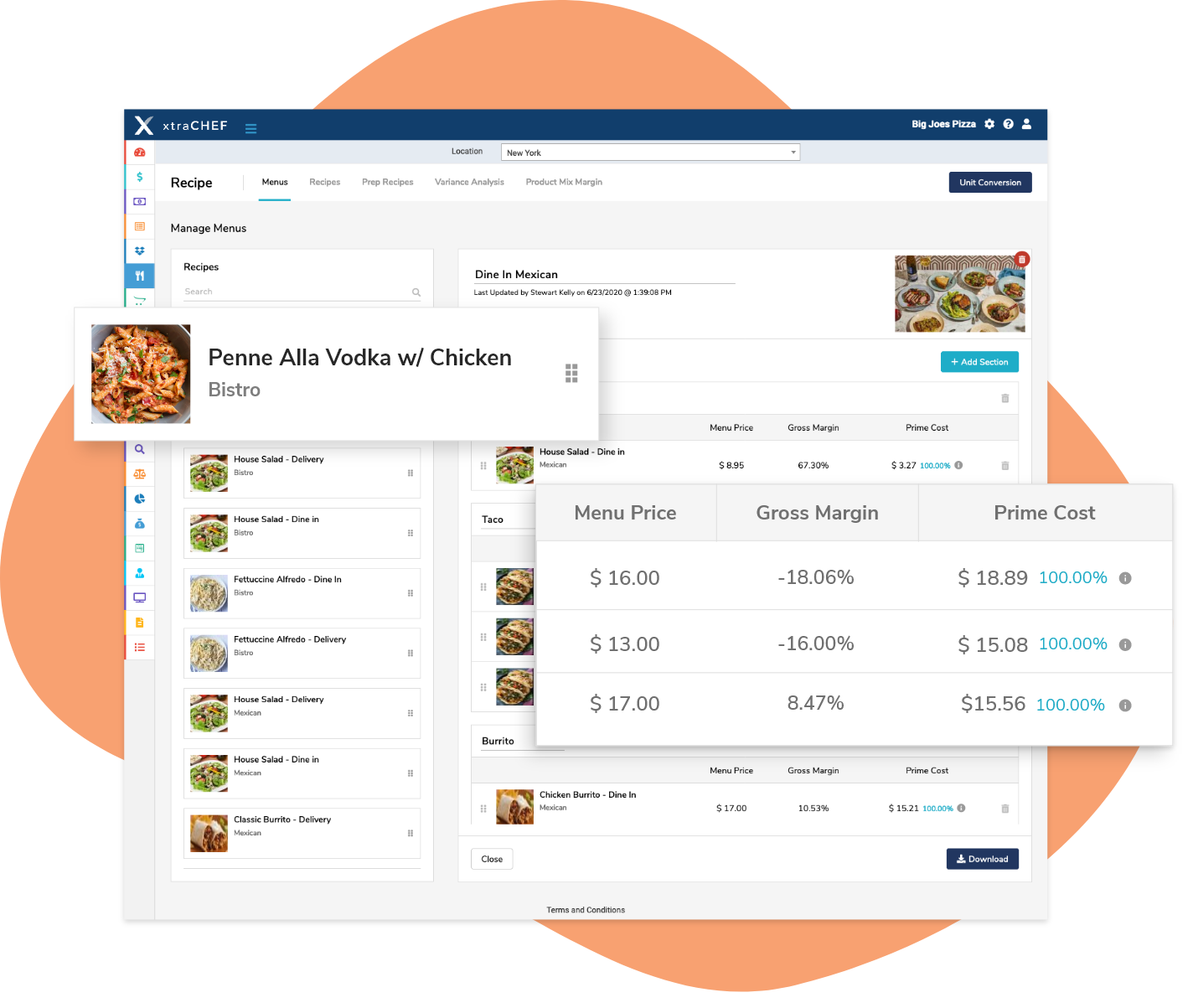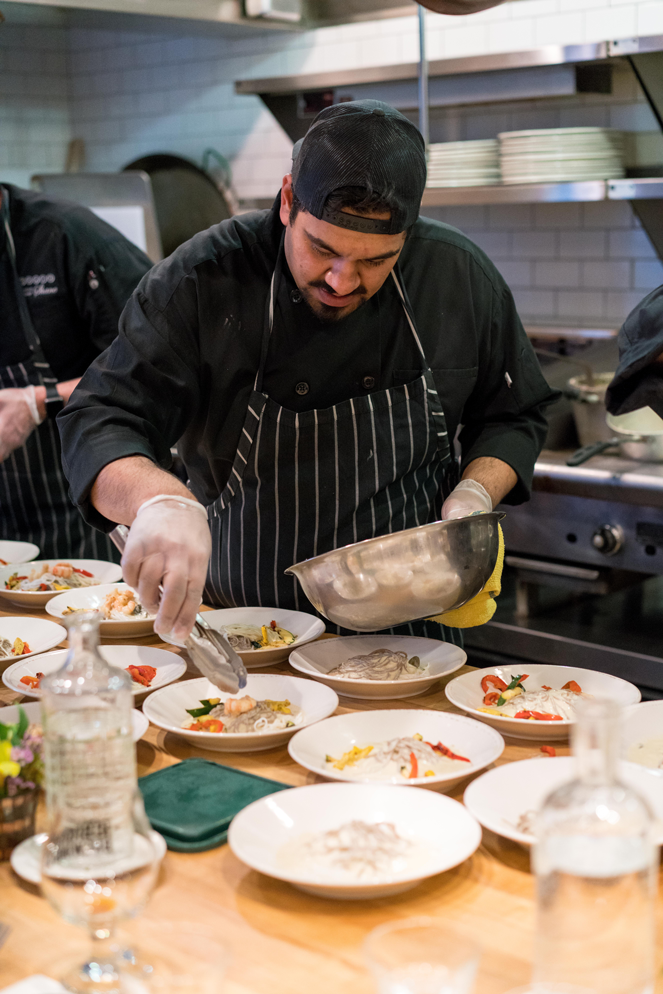Turn a Good Restaurant into a Great Restaurant with a Restaurant Budget
The restaurant business is a unique business. But what our industry lacks in common with other industries, it makes up for in what all businesses have in common – it’s supposed to make money!
In fact, the biggest barrier to entry of becoming a restaurant owner is……MONEY. That’s it! And, it often helps to have some deep pockets. They say, “If you want to make a million dollars in the restaurant business, spend five million.”
But it doesn’t have to be like that! By taking the time and making the effort to create a thoughtful, well-organized restaurant budget, you can turn a good restaurant into a great restaurant.
Building a Successful Restaurant Budget
The toughest part of building a restaurant budget is knowing how to get started. A simple place to start is a basic formula: money in – money out = profit. So, you need to anticipate what your money in will be (i.e. sales) and what your money out will be (i.e. expenses, restaurant food costs) to project what your profits will be. Let’s look at restaurant budget components to get to these numbers.
Here are the most important pieces to a solid restaurant budget…
Sales/Revenue Forecast
First and foremost, you need to how much money you’re going to bring in. This is your sales forecast, or revenue forecast. Revenue generally represents all dollars (net sales + taxes + comps). Net sales are the dollars that are actually yours, and the money that you will actually be using to pay expenses.
For a great restaurant budget, you need to start with the most accurate sales forecast as possible. This means we need to figure out a realistic amount of sales that you will do in a given time period. If these numbers are inaccurate, the rest of your budget will likely be a bust.
We HIGHLY recommend doing your budget based off of Fiscal “Periods”, not months. Start each week on the same day and end it on the same day. This way you will have the same amount of Mondays, Tuesdays, Wednesdays, etc… in each period. This makes it easier to look at historical trends, project those trends for the future, and also make comparisons. If you don’t want to change it due to a long history of doing otherwise, we get it…but it’s worth your consideration.
Some tricks to find out how much you will sell:
- Your rolling week average or sales from same weeks of last year.
- Multiplying your check averages by your guest counts from last year or the trends if you are just getting started.
- You can also start with your monthly rent. Multiply monthly rent by 12 (twelve months), then multiply this number by 15. This gives you a a target of your yearly sales to survive. You can then divide that number by 52 weeks to give you an idea of what your weekly sales should be. (PLEASE CONSIDER THIS EQUATION BEFORE YOU SIGN A LEASE!!!)
- Example: Rent is $6,500 x 12 months x 15 = $1,170,000 / year in Sales
- $1,170,000/52 = $22,500 per week
- $22,500 / 7 = $3,214 per day
- Example: Rent is $6,500 x 12 months x 15 = $1,170,000 / year in Sales
Understanding Labor, Liquor & Food Costs
Figuring out your Gross Profit (GP) is next. In order to get to your Gross Profit, you have to subtract out your COGS, or Costs of Good Sold. Your restaurant’s COGS represents the food that you purchased and sold in order to earn your sales revenue. A benchmark number for your COGS is typically around 30% – 35% of your revenue. Some restaurants add in the labor to produce the food called the Back of House (BOH) labor. After you take out the cost of the food, the liquor and possibly the BOH labor, what’s left is your Gross Profit.
Your Gross Profit, or the rest of that money that you have left after subtracting COGS from Sales, is what you’ll use to pay your operating expenses. Your target Gross Profit should be 65-70% gross profit. That means if your revenue is $100,000 for the month, then you should have $65,000-$70,000 left over to pay your fixed expenses.
Labor is the most important “fixed expense”. The reason we put that in quotes is that labor is really a variable expense, but it should remain as a constant % that should rise with higher sales and fall with lower sales. Front of House (FOH) labor should be in the 6-9% range. Back of house (BOH) should be in the 7-10% range and management should be under 10%. A good rule of thumb for Total Labor (Front of House, Back of House, Management) is 30%.You will need to be most reactive to this expense.
Now subtract:
- Rent
- Supplies
- Cleaning
- Advertising
- Benefits
- Uniforms Repairs/Maintenance Trash
- Linens
- Common Area Maintenance (CAM)
- Phone/Internet
- Bank Fees
- Credit Card Fees
- Accountant
- Etc…
Getting to the Bottom Line
Whatever you have left over after subtracting your expenses from your revenue is your bottom line. The bottom line in a restaurant is on average 5% of your revenue; however, great restaurants can get their profits as high as 15%. Bad restaurants may never make a penny.
So, if you can project what your sales will be for a given period, factor what you expect to spend from a COGS perspective to make that money, and anticipate your labor and fixed expenses, then you can build a budget. While each business/restaurant is unique, you can use the benchmark percentages provided above as a guide.
The only way to make money in the restaurant business is to have a plan to make money. And, the way you can plan to make money is by building a restaurant budget. A restaurant budget is THE most important piece of running a profitable restaurant. If you build a budget and continuously track and manage to that budget, you can make money in an industry notoriously known for thin margins and, worse, failure.
With xtraCHEF’s AP automation for restaurants and declining budget module, much of the heavy lifting of tracking your budget throughout the month is eliminated. To learn more about xtraCHEF and how to easily manage your new restaurant budget, request a demo.
This article was contributed by Brendan O’Leary of Chex Consulting.
Brendan has been in the hospitality industry his whole life, coming from a line of restaurant owners. Working for many restaurants and bars, he’s developed a love for making businesses profitable. He currently runs a group of restaurants in Maryland and consults with countless others with his company, Chex Consulting.

Let xtraCHEF do your dirty work.
See how our platform sets restaurants of all sizes and service levels up for success by scheduling a demo with a Product Specialist.


